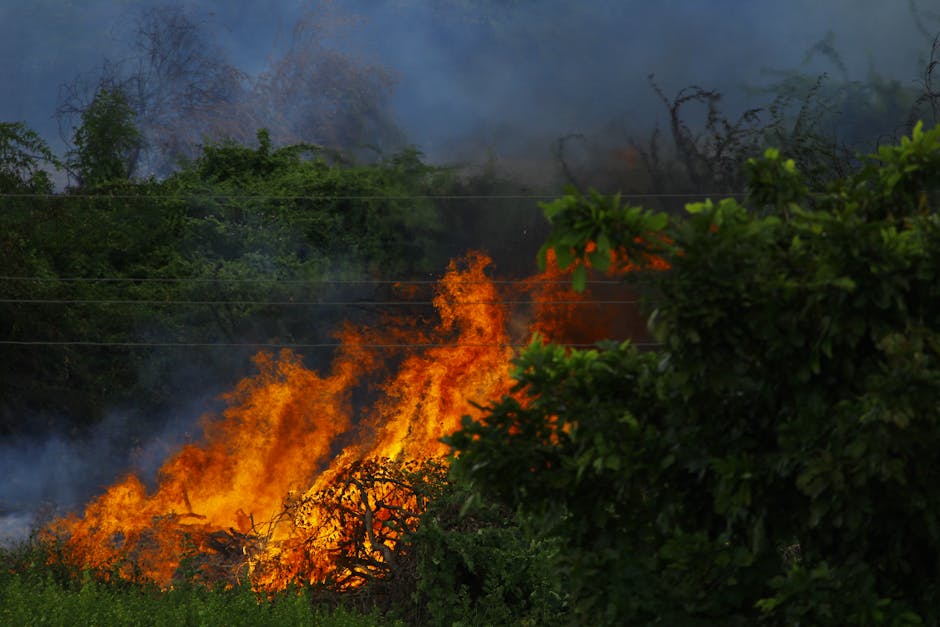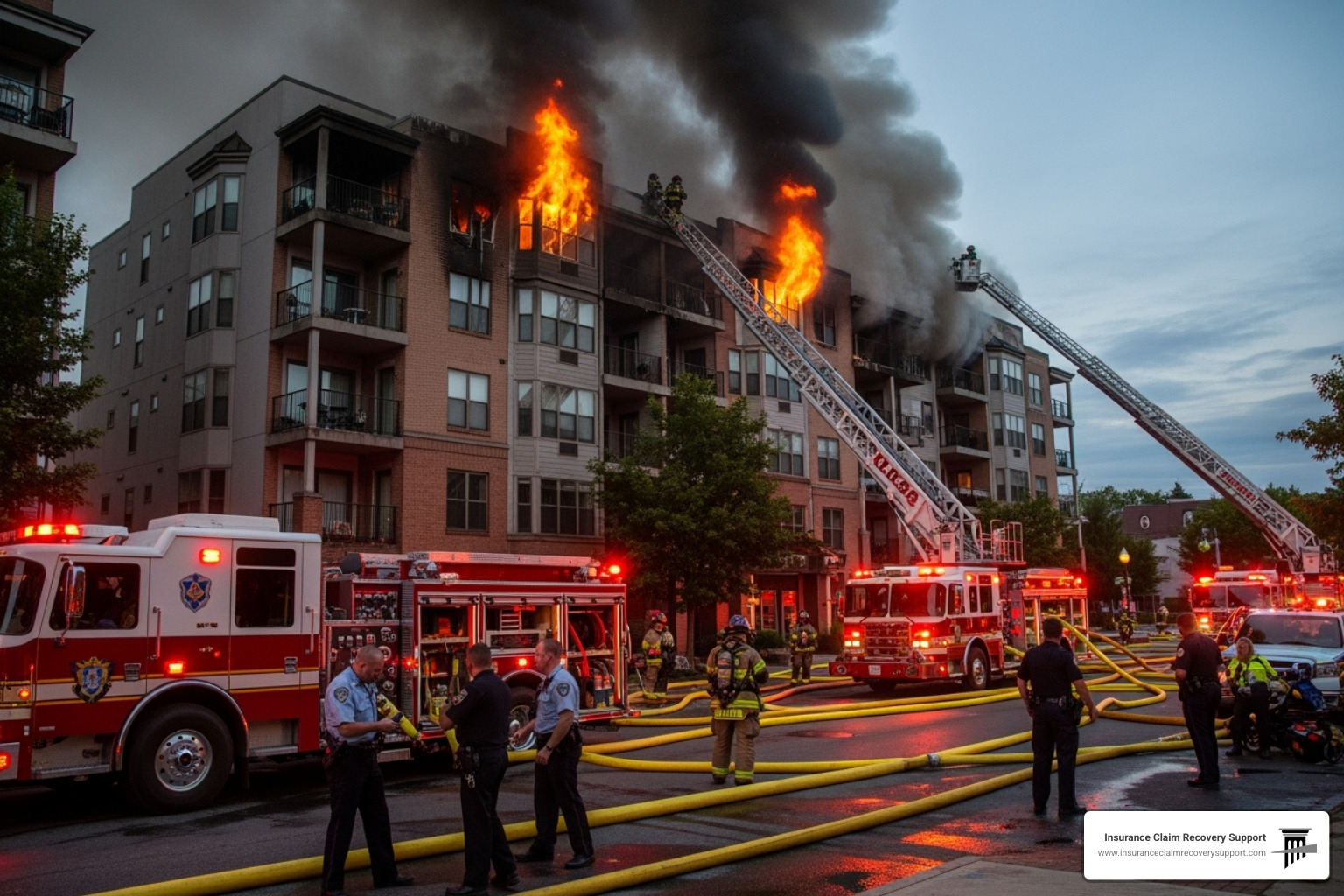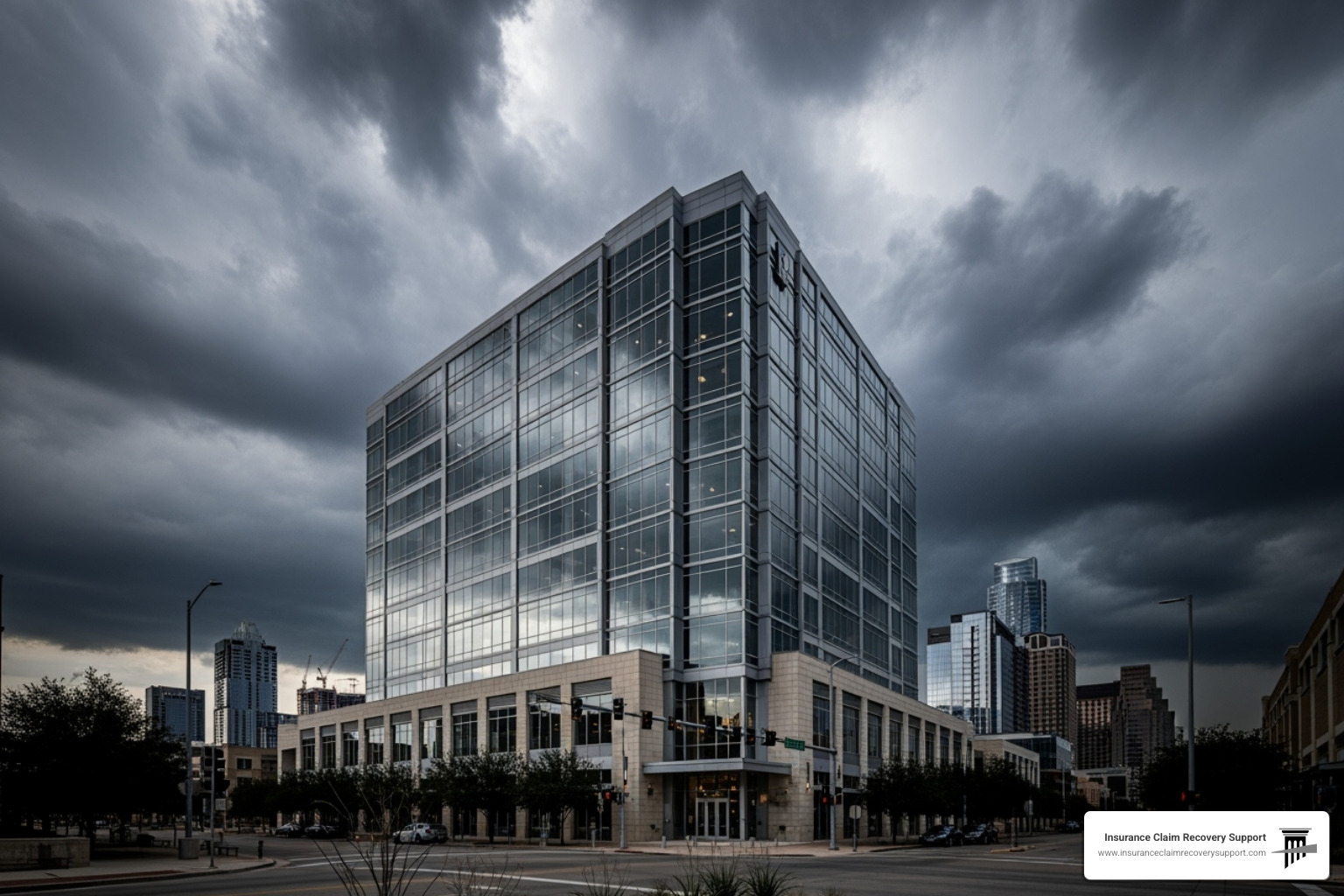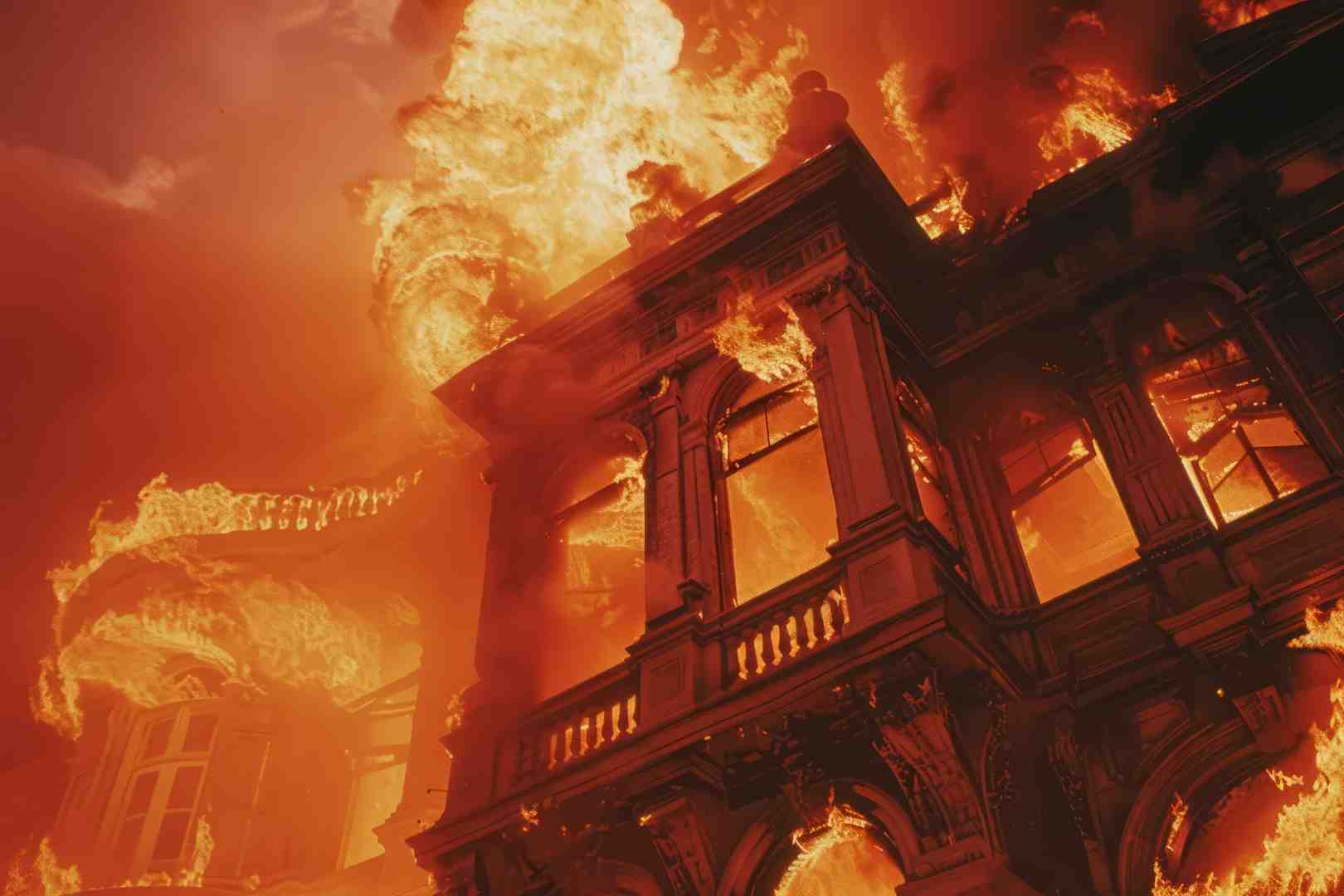Fire mitigation is essential for anyone living or operating in the wildland urban interface, where the boundaries between urban developments and wildlands blur. This area is particularly vulnerable to wildfires, which threaten homes, businesses, and communities every year.
To protect lives, property, and ecosystems, fire mitigation involves:
- Assessing and reducing wildfire risk with strategic planning.
- Creating defensible spaces around properties by managing vegetation.
- Enhancing community adaptability by implementing fire-resistant building codes and fostering public education.
In today’s changing climate, wildfires are becoming more frequent and severe, making proactive measures crucial. Mitigation not only reduces the immediate danger but also builds resilience within communities.
“Communities worldwide are now turning to a multifaceted approach to mitigate the impacts of these natural disasters,” says Michael Gallagher, a Senior Director of Mitigation.
I’m Scott Friedson, CEO of Insurance Claim Recovery Support, and I’ve dedicated my career to aiding clients in navigating the complexities of fire claims. Through successfully settling over $250 million in insurance claims, I’ve witnessed the importance of proactive fire mitigation measures in safeguarding communities and investments.
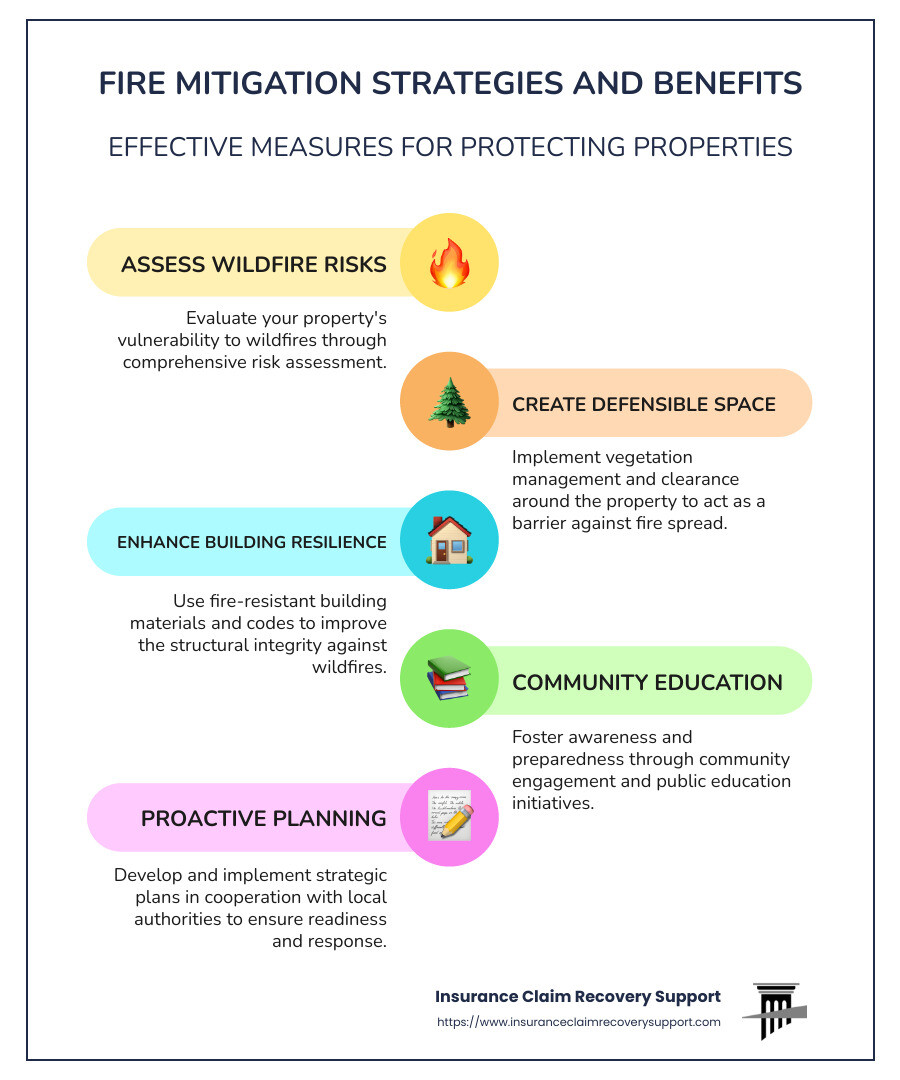
Key terms for fire mitigation:
– Apartment fire insurance claim
– Apartment building fire
– asbestos
Understanding Fire Mitigation
Wildfire Mitigation
Wildfire mitigation is all about taking proactive steps to reduce the risk and impact of wildfires. This involves a combination of strategies, from improving building materials to managing the landscape around homes. The goal is to make homes and communities less likely to catch fire and more resilient if they do.
Fire-resistant codes are rules and standards designed to make buildings safer during a wildfire. For example, homes built after the implementation of modern fire-mitigation codes have a better chance of surviving wildfires. In California, after the Camp Fire, it was found that 51% of homes built under new codes survived, compared to only 18% of older homes. These codes often require using non-combustible materials like metal or tile for roofing and siding, which can withstand high temperatures and prevent embers from igniting the structure.
Defensible Space
Creating a defensible space around your home is a crucial part of fire mitigation. This involves clearing the area of flammable materials to stop the spread of fire. Think of it as a buffer zone where vegetation is managed to keep fires at bay.
-
Zone Planning: Divide your property into zones with specific mitigation practices. The area closest to your home should be the most rigorously managed.
-
Vegetation Control: In the immediate zone, typically within 30 feet of your home, remove all dead or dry vegetation and keep trees and shrubs pruned and spaced out.
-
Non-combustible Zones: Use gravel, concrete, or stone in areas adjacent to your home to act as a fire break.

These measures not only protect individual properties but also contribute to the safety of the entire community. As wildfires become more common and intense, understanding and implementing these strategies is more important than ever.
Best Practices for Fire Mitigation
When it comes to fire mitigation, a few best practices can make a significant difference in safeguarding your home and community. Let’s explore some key strategies: electrical safety, vegetation management, and ember intrusion.
Electrical Safety
Electrical safety is a crucial part of fire mitigation. Faulty wiring and overloaded circuits can spark fires, especially during dry seasons.
-
Regular Inspections: Have a certified electrician inspect your home’s wiring regularly. This helps identify potential hazards before they become a problem.
-
Extension Cord Safety: Avoid using extension cords as a permanent solution. They can overheat and cause fires if used improperly.
-
Appliance Maintenance: Ensure all appliances are in good condition. Unplug them when not in use, especially during storms or high-risk periods.
Vegetation Management
Managing vegetation around your home is essential to reduce wildfire risk. This involves controlling the amount and type of flammable material near your property.
-
Fuel Reduction: Thin out tree canopies and remove dead wood. This reduces the fuel available for a wildfire to spread.
-
Controlled Burns: In some areas, fire professionals use controlled burns to clear out dangerous underbrush. While controversial, these burns can prevent larger, uncontrolled fires.
Ember Intrusion
Embers are tiny, burning fragments that can travel long distances during a wildfire. They are a leading cause of home ignitions.
-
Roofing and Siding: Use non-combustible materials like metal or tile. These materials resist ember ignition better than traditional wood.
-
Vents and Openings: Install screens on vents and chimneys to prevent embers from entering your home. A mesh size of 1/8 inch is recommended.
-
Decks and Attachments: Ensure there are no gaps where embers can lodge. Use metal flashing to protect areas where decks attach to the house.
By implementing these practices, you can significantly lower the risk of your home catching fire. These steps, combined with community-wide efforts, create a safer environment for everyone.
Next, we’ll explore wildfire mitigation strategies and how communities can proactively plan to reduce risks even further.
Wildfire Mitigation Strategies
When it comes to wildfire mitigation, federal recommendations, community risk reduction, and proactive planning play vital roles. Let’s explore these strategies to better protect our communities.
Federal Recommendations
Federal agencies have been working hard to provide guidelines and resources for wildfire mitigation. The Wildland Fire Mitigation and Management Commission, established under the Bipartisan Infrastructure Law, is a key player in this effort. This commission is tasked with forming strategies to prevent, manage, and recover from wildfires.
Federal guidelines emphasize the importance of creating defensible spaces around properties. This involves clearing flammable vegetation and using fire-resistant building materials. The goal is to slow down or stop wildfires before they reach homes and infrastructure.
Community Risk Reduction
Communities are at the forefront of wildfire risk reduction. By understanding local risks and taking collective action, neighborhoods can significantly lower their vulnerability to wildfires.
-
Firewise Communities: Programs like Firewise encourage residents to work together to reduce wildfire risks. This includes community clean-up days, where neighbors help each other clear brush and debris.
-
Education and Drills: Educating residents about wildfire risks and conducting regular evacuation drills can prepare communities for potential emergencies. Knowing what to do and where to go can save lives.
-
Collaborative Planning: Interagency cooperation is crucial. Local governments, fire departments, and residents must collaborate to create effective wildfire response plans.
Proactive Planning
Proactive planning involves taking steps before a wildfire occurs to minimize damage and ensure quick recovery.
-
Early Detection Systems: Investing in technology that detects wildfires early can lead to faster response times. This includes satellite monitoring and ground-based sensors.
-
Building Codes and Zoning Laws: Implementing strict building codes that require fire-resistant materials can make homes more resilient. Zoning laws can also ensure that new developments are built with wildfire risks in mind.
-
Vegetation Management Plans: Regularly updating and enforcing vegetation management plans can prevent wildfires from gaining momentum. This includes strategies like controlled burns and fuel reduction.
By focusing on these strategies, communities can not only protect themselves from the immediate threats of wildfires but also contribute to long-term resilience.
Next, we’ll look at the role of the Wildland Fire Mitigation and Management Commission and how it brings together various stakeholders to tackle wildfire challenges.
The Role of the Wildland Fire Mitigation and Management Commission
The Wildland Fire Mitigation and Management Commission is pivotal in shaping how the United States addresses the escalating threat of wildfires. Established under President Biden’s Bipartisan Infrastructure Law, this commission serves as a collaborative platform for federal agencies, state and local governments, tribal representatives, and private entities to work together on wildfire prevention and recovery strategies.
Bipartisan Infrastructure Law
The Bipartisan Infrastructure Law was a significant legislative step toward enhancing the country’s infrastructure, including its ability to manage and mitigate wildfires. The establishment of the Wildland Fire Mitigation and Management Commission under this law underscores the federal commitment to addressing wildfire challenges through collaboration and innovation.
Federal Agencies and Wildfire Stakeholders
The commission is co-chaired by leaders from the Department of Agriculture, Department of the Interior, and the Federal Emergency Management Agency (FEMA). These federal agencies, along with 11 federal members and 18 non-federal primary members, bring a wealth of expertise and resources to the table. Their collaboration is crucial for developing comprehensive strategies that address both the causes and effects of wildfires.
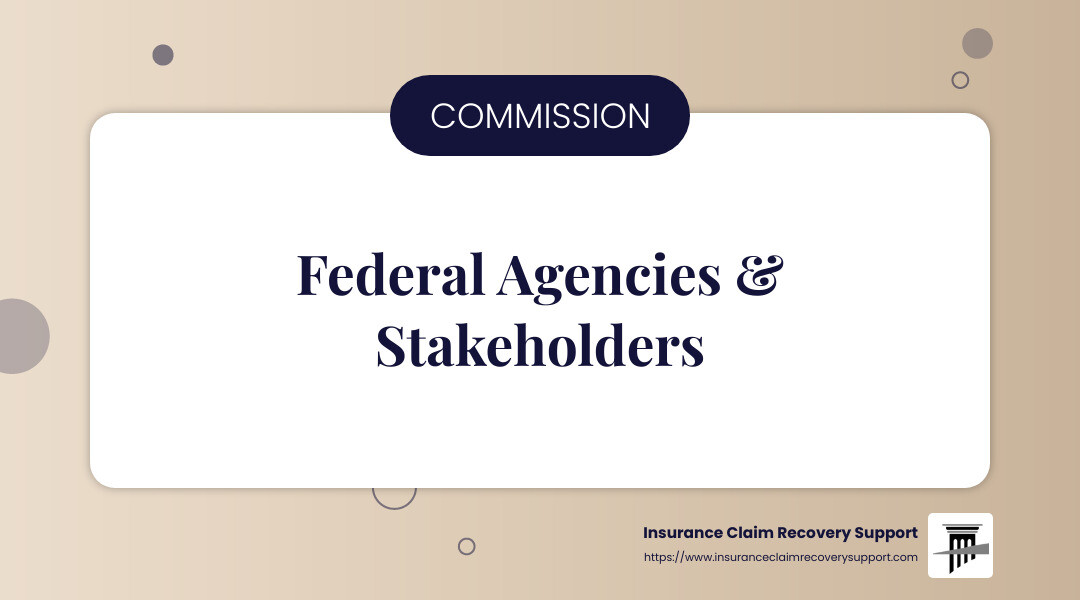
Engaging Wildfire Stakeholders
The commission’s structure is designed to include a diverse range of voices, ensuring that policies are well-rounded and practical. This includes representatives from:
-
Tribes: Recognizing the unique challenges faced by tribal lands, tribal representatives play a critical role in shaping policies that respect and protect these areas.
-
State and Local Municipalities: Local governments are on the front lines of wildfire response. Their involvement ensures that strategies are custom to the specific needs and conditions of different regions.
-
Private Entities: Businesses and private landowners are also key stakeholders. Their participation helps in developing solutions that are economically viable and effective in reducing wildfire risks.
Recommendations and Strategies
The commission is tasked with providing recommendations to improve wildfire prevention, mitigation, suppression, and recovery efforts. This includes:
-
Restoration Policies: Developing strategies to restore lands affected by wildfires, ensuring they are resilient to future events.
-
Resource Allocation: Identifying and addressing gaps in resources, such as aerial firefighting equipment, to improve response capabilities.
-
Community Engagement: Encouraging community participation in wildfire planning and risk reduction efforts, recognizing that local action is essential for effective mitigation.
By bringing together such a broad coalition of stakeholders, the Wildland Fire Mitigation and Management Commission is at the forefront of crafting innovative solutions to one of the most pressing environmental challenges of our time.
Next, we’ll dive into some frequently asked questions about fire mitigation to help you better understand how these strategies can be applied in your community.
Frequently Asked Questions about Fire Mitigation
What is fire mitigation?
Fire mitigation involves taking steps to reduce the risk and impact of wildfires on homes and communities. It includes measures like using fire-resistant building materials, creating defensible spaces around properties, and managing vegetation to prevent fires from spreading. These strategies are essential, especially in areas prone to wildfires, like the wildland-urban interface (WUI).
How can we mitigate fire?
Wildfire precautionary measures are crucial for protecting properties and lives. Here are some effective strategies:
-
Electrical Equipment Checks: Regularly inspect and maintain electrical systems to prevent sparks that could ignite fires. This includes checking circuit breakers, outlets, and wiring for any signs of wear or damage.
-
Extension Cord Safety: Use extension cords properly by avoiding overloading them. Ensure they are in good condition and suitable for outdoor use if needed. Faulty cords can be a fire hazard.
-
Building Protection: Upgrade homes with fire-resistant materials such as metal roofing, brick siding, and tempered glass windows. These materials can withstand higher temperatures and reduce the likelihood of a structure catching fire.
What are the best practices for wildfire mitigation?
To effectively mitigate wildfire risks, consider these best practices:
-
Flammable Material Removal: Clear away flammable materials like dead leaves, dry grass, and wood piles from around your home. These can act as fuel for wildfires, making it easier for flames to reach your property.
-
Vegetation Clearance: Maintain a defensible space by trimming trees and shrubs, especially those close to your home. Create a buffer zone that separates your property from surrounding vegetation, reducing the chance of a fire spreading to your home.
Implementing these practices can significantly improve your home’s resilience to wildfires. By taking proactive steps, you can safeguard your property and contribute to overall community safety.
Next, we’ll explore how Insurance Claim Recovery Support can help policyholders steer the complexities of fire and storm damage claims.
Conclusion
Navigating the aftermath of a fire can be overwhelming, but you’re not alone. At Insurance Claim Recovery Support, we stand firmly with policyholders, ensuring they receive the maximum settlement possible for fire and storm damage claims. Our expertise in Texas fire and storm damage, especially in areas like Austin, Dallas-Fort Worth, San Antonio, and Houston, positions us to advocate effectively on your behalf.
Policyholder Advocacy
We understand the complexities of insurance claims. Our mission is to simplify this process for you, ensuring your claim is handled with the attention it deserves. We advocate for policyholders, not insurers, which means we work tirelessly to secure fair compensation for your losses. Our team is dedicated to making the claim process as smooth as possible, so you can focus on rebuilding and moving forward.
Texas Fire and Storm Damage News
The risk of wildfires is increasing, particularly in Texas, where hotter and drier conditions prevail. In 2022 alone, more than 7.34 million acres were burned in wildfires across the U.S., with Texas being one of the most affected states. This highlights the urgent need for fire mitigation strategies and effective insurance support.
Our role at Insurance Claim Recovery Support is to ensure you’re prepared and protected. We provide guidance on fire mitigation practices and help you understand your insurance policy’s coverage. Our goal is to help you recover from fire and storm damage without undue financial strain.
For more information on how we can assist you with your multi-family insurance claims, visit our service page. Let us be your trusted partner in securing the settlement you need to move forward confidently.

